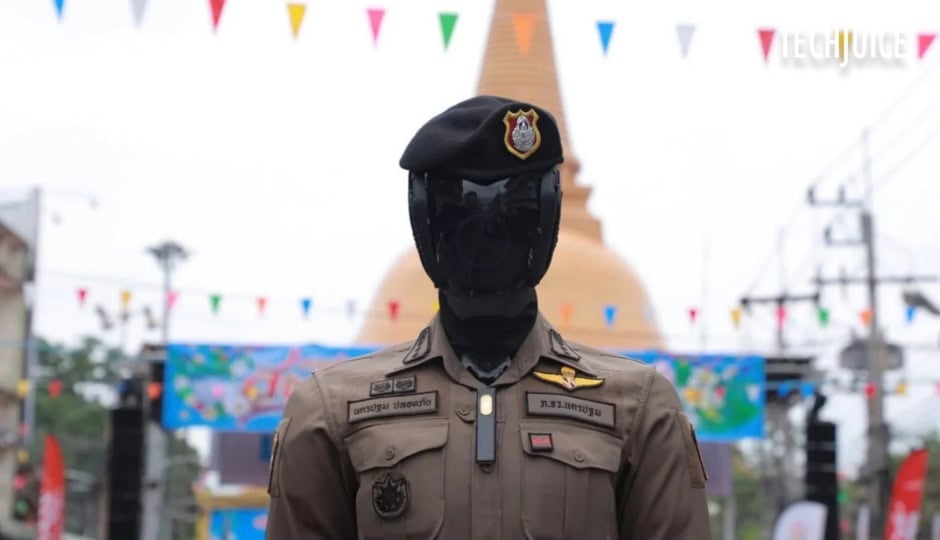Robot Cop Makes a Splash at Thailand’s Songkran Festival Debut!

Thailand marked its traditional New Year celebrations with the debut of a high-tech addition to law enforcement: Robot Thai Police, officially named AI Police Cyborg 1.0. The robotic officer made its first public appearance on April 16, standing watch over the Songkran festivities on Tonson Road in Muang District, Nakhon Pathom.
Jointly developed by the Provincial Police Region 7, Nakhon Pathom Provincial Police, and Nakhon Pathom Municipality, the AI-powered robot is designed to support crowd management and public safety during large events.
According to a statement by the Royal Thai Police (RTP), the robot operates in sync with the province’s Command and Control Centre, helping to coordinate real-time responses through its advanced video surveillance capabilities.
Functionality of Robot Thai Police
Dressed in a standard police uniform and mounted on a wheeled platform, AI Police Cyborg 1.0 features several cutting-edge tools: 360-degree AI-enabled cameras, facial recognition, behavioural analysis, suspect tracking, and weapon detection. It can also access footage from local CCTV networks and aerial drone surveillance, enabling a broad and integrated overview of public spaces.
The robot’s onboard AI is able to differentiate between common festival props like water guns and actual weapons, while its behavioural monitoring system is designed to flag potentially violent or disruptive conduct. If a known suspect or blacklisted individual is detected, alerts are automatically sent to human officers.
Police have highlighted the robot’s potential to act as a “force multiplier”, especially during mass gatherings like Songkran, where traditional resources can be overstretched. “It’s a robot that never tires and maintains constant vigilance,” a spokesperson said.
However, while the robot’s technological promise is significant, questions remain about its practical effectiveness. Despite the advanced surveillance systems, observers have noted that there is limited evidence of the robot’s ability to move independently through crowded or uneven terrain. Past examples from other cities, such as New York and California, have shown that similar police robots often fall short in real-world scenarios either due to technical glitches or limited public utility.
Public Reaction
Some civil rights groups and analysts have also raised concerns about the broader implications of such surveillance technologies, particularly in countries with histories of limited transparency and policing controversies. However, Thai authorities maintain that the primary goal of AI Police Cyborg 1.0 is public safety, not suppression.
While the robot may still be in its early stages, its debut during one of Thailand’s most celebrated events signals a growing interest in integrating AI into public security frameworks. Whether Robot Thai Police becomes a staple in future festivals and urban policing remains to be seen.
Sharing clear, practical insights on tech, lifestyle, and business. Always curious and eager to connect with readers.


 3 min read
3 min read
















